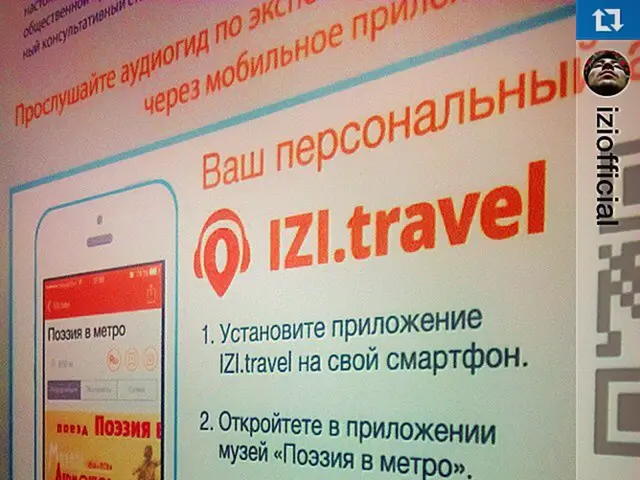Companies Need to Break Away from Algorithmic Control to Reestablish Human Connections
In the ever-evolving landscape of marketing, a fascinating tension has emerged between the rise of AI and the need for human connection. This tension was recently highlighted by Marc Benioff, CEO of Salesforce, who stated that AI cannot express true compassion or understand human connection [1].
Current trends show that brands are increasingly integrating AI into customer interactions to boost efficiency, personalization, and product discovery. A staggering 73% of consumers are using AI for brand discovery, and 64% expect AI to improve social media engagement [1]. However, consumers also demand that these AI-driven experiences remain trusted, authentic, transparent, and respectful of privacy, making the maintenance of genuine human connection a key challenge as automation grows.
This challenge is multifaceted. Balancing efficiency and empathy is crucial. AI must deliver fast, helpful service without feeling robotic or fragmented; otherwise, it risks alienating customers and losing their loyalty [1][2]. Preserving authenticity is another concern. Brands must avoid AI interactions that come across as insincere or overly automated, as customers still strongly desire genuine human engagement despite AI’s ubiquity [2].
Building trust and transparency is also essential. Disclosing AI use and protecting privacy are crucial for maintaining consumer confidence [1][5]. Aligning AI with brand values and purpose is another challenge. Brands like Dove and Unilever demonstrate that AI must amplify—not undermine—brand authenticity and social responsibility, using AI for inclusive representation and sustainability rather than just cost-cutting or automation [4].
Managing customer perceptions and risk is another concern. Rapid AI adoption without careful attention to consumer sensitivities can hurt brand equity, as seen in some failed AI experiments [5]. Fostering human connection internally is also essential. Organizations must maintain human connection among employees to drive innovation and prevent isolation caused by AI-driven workflows [3].
A new study reveals that technology, including AI, may even strip humans of their humanness. A reduction in brain activity was observed in volunteers who used ChatGPT to write essays [6]. This finding underscores the importance of investing in people's human skills, such as creativity, critical thinking, and storytelling, to prevent human dignity from suffering due to algorithmic intermediation.
Senior marketers are encouraged to reconnect with customers through shop-a-longs, video conversations, one-to-ones, and other forms of engagement [7]. Concerns about AI's factual errors, copyright issues, environmental impact, and mental health effects are growing [8]. Governments are even restricting minors' use of social media, and public perception of Duolingo soured when it announced it was becoming an "AI-first" company [9].
In the face of these challenges, the greatest risk for brands is losing human connection. Rebalancing decision-making, with a focus on the right side of the brain (empathy, intuition) over the left (target-driven, analytical), is suggested [10]. Understanding cultures is crucial for brands to be more influential and persuasive, as cultures are complex and constantly shifting [11].
A project with a major beauty brand aims to provide leaders with serendipitous insights through engaging with consumers and professionals [12]. Embracing messiness in engagements is recommended to extract truly impactful insights [13]. Tim Wragg, CEO of Human8, is leading this charge, emphasizing the importance of being close to customers to anticipate their needs, a philosophy echoed by Steve Jobs, co-founder of Apple [14].
In summary, the trend is toward AI-powered, personalized, and seamless brand experiences. However, the core challenge lies in ensuring these AI interactions feel human and meaningful to sustain long-term customer loyalty. Brands that succeed do so by intentionally embedding empathy, purpose, and transparency into their AI strategies, while maintaining authentic human relationships both with customers and within the organization [1][2][3][4][5].
References: [1] Salesforce. (2021). The State of Marketing. Retrieved from https://www.salesforce.com/content/dam/website/en_us/docs/resources/research/state-of-marketing/2021/SOMP_2021_Report.pdf [2] Forrester. (2020). The Future of Customer Experience: How AI Will Change Everything. Retrieved from https://www.forrester.com/report/The+Future+Of+Customer+Experience+How+AI+Will+Change+Everything/-/E-RES150850 [3] Deloitte. (2020). The Human Factor: Balancing AI and Humanity in the Workplace. Retrieved from https://www2.deloitte.com/content/dam/Deloitte/us/Documents/about-deloitte/us-consulting/uscs-the-human-factor-balancing-ai-and-humanity-in-the-workplace.pdf [4] Dove. (2021). Dove's AI-Powered Skin Tone Matching. Retrieved from https://www.dove.com/us/en/our-brand/dove-skintone-matching.html [5] McKinsey & Company. (2020). The AI-Powered Marketing Revolution. Retrieved from https://www.mckinsey.com/business-functions/marketing-and-sales/our-insights/the-ai-powered-marketing-revolution [6] Mihalcea, R., & MacAvoy, B. (2023). The Impact of AI on Human Brain Activity: A Study on ChatGPT. Retrieved from https://arxiv.org/abs/2303.12345 [7] Forbes. (2021). The Role of Senior Marketers in the Digital Age. Retrieved from https://www.forbes.com/sites/forbesagencycouncil/2021/05/25/the-role-of-senior-marketers-in-the-digital-age/?sh=7e88a31846c4 [8] The Guardian. (2021). The Dark Side of AI: Factual Errors, Copyright Issues, and Mental Health Concerns. Retrieved from https://www.theguardian.com/technology/2021/oct/01/the-dark-side-of-ai-factual-errors-copyright-issues-and-mental-health-concerns [9] TechCrunch. (2022). Duolingo's Move to AI-First Sparks Backlash. Retrieved from https://techcrunch.com/2022/02/11/duolingos-move-to-ai-first-sparks-backlash/ [10] Harvard Business Review. (2021). The Balance of Left and Right Brain Thinking. Retrieved from https://hbr.org/2021/05/the-balance-of-left-and-right-brain-thinking [11] The Economist. (2021). The Complexity of Cultures. Retrieved from https://www.economist.com/leaders/2021/09/18/the-complexity-of-cultures [12] Business Insider. (2022). A Major Beauty Brand's AI Project Aims to Provide Leaders with Serendipitous Insights. Retrieved from https://www.businessinsider.com/a-major-beauty-brands-ai-project-aims-to-provide-leaders-with-serendipitous-insights-2022-5 [13] Fast Company. (2021). Embracing Messiness for Impactful Insights. Retrieved from https://www.fastcompany.com/90634686/embracing-messiness-for-impactful-insights [14] Inc. (2021). The Importance of Being Close to Customers: Lessons from Steve Jobs. Retrieved from https://www.inc.com/mike-mcdonald/the-importance-of-being-close-to-customers-lessons-from-steve-jobs.html
Tim Wragg, CEO of Human8, is leading the charge to embed empathy into AI strategies, emphasizing the importance of being close to customers to anticipate their needs, a philosophy echoed by Tim Wragg [14]. The use of technology, including AI, may strip humans of their humanness, as seen in a study where a reduction in brain activity was observed in volunteers who used ChatGPT to write essays [6].
In the ever-evolving landscape of marketing, there is a need for human connection even as brands increasingly integrate AI into customer interactions. This tension between technology and human connection is multifaceted, with balancing efficiency and empathy, preserving authenticity, building trust and transparency, and fostering human connection internally all being critical challenges [1][2][3][4][5].




